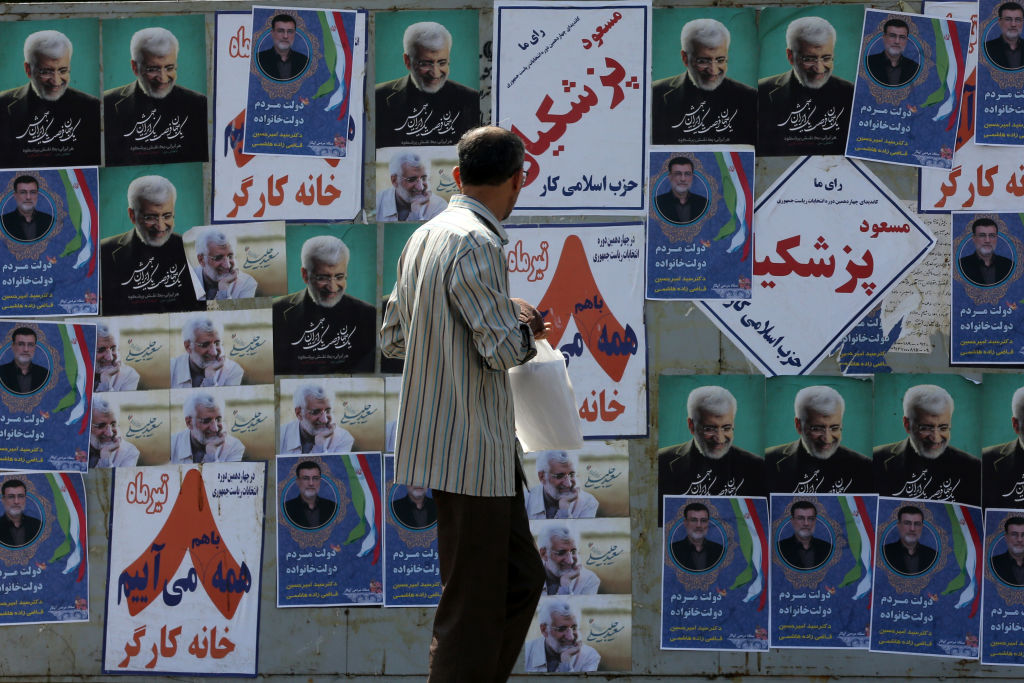The virus fueling pandemic fears in China is surging in parts of the US Midwest, official data shows.
Infections caused by the human metapneumovirus (HPMV) are three times higher in Missouri, Kansas, Nebraska and Iowa than the US national average. More than one in 20 people in those states who has a cough is estimated to have the virus.
CDC data shows 5.4 percent of tests conducted in the region during the last week of December came back positive for HMPV, compared to 1.9 in the rest of America.
HMPV, which some doctors describe as 'the most important virus you've never heard of', has been partly blamed for a viral outbreak in China that is reportedly overwhelming hospitals in the country's northern provinces.
But Beijing and the World Health Organization have downplayed footage of overcrowded waiting rooms and wards posted on Chinese social media, saying the country's outbreak is 'not unusual' for winter and actually 'smaller in scale' compared to last year.
The situation led to some drawing similarities with the Covid outbreak in 2019, which was initially played down by China, but experts say they are totally different.
HMPV is much milder than the initial Covid strain was and because it has been around for decades, there is already population immunity against it.
Still, it can be deadly for children and immunocompromised patients like Diane Davison, 60, a lawyer from Maryland, who was left 'unable to speak' due to 'violent' coughing fits.
MIDWEST SURGE: Region 7, which covers Missouri, Kansas, Nebraska and Iowa, is seeing sky-high rates of HMPV compared to the rest of the country
This map shows how the CDC breaks down different regions of the US for its weekly breakdown of respiratory infections
The World Health Organization said in a statement Tuesday that it has been in contact with Chinese health authorities, who have not noticed any unusual outbreak patterns.
The WHO said: 'The observed increases in acute respiratory infections and associated pathogen detections in many countries in the Northern hemisphere in recent weeks is expected at this time of year and is not unusual.'
HMPV first emerged in 2001 and typically causes symptoms of a common cold like cough, fever, and runny nose.
But more severe symptoms such as bronchitis, bronchiolitis and pneumonia can occur, with sufferers experiencing a shortness of breath, severe cough or wheezing.
According to the National Respiratory and Enteric Virus Surveillance System (NREVSS), a CDC database, the area with the second-highest HMPV rate in the US was Region 5.
This area includes Illinois, Indiana, Ohio, Michigan, Wisconsin, and Minnesota.
An estimated 2.2 percent of the region's 2,270 HMPV tests came back positive during the week of December 28, meaning around one in 50 people with a respiratory illness has the virus.
Regions 8 and 9 tied for the third-highest HMPV rates with a two percent test positivity out of 1,168 and 354 tests, respectively.
These areas include Colorado, North Dakota, South Dakota, Wyoming, California, Nevada, Arizona, Utah, and Montana.
Regions 1 and 2 had the lowest test positivity rates at 0.9 percent. These areas include northeastern states like Maine, New York, Massachusetts, Connecticut, and New Jersey.
Region 1 conducted 2,270 tests while Region 2 conducted 1,855.
Overall, data shows positive tests results for HMPV are twice as high in the US now compared to this time last year, but cases remain low and the CDC says there is nothing out of the ordinary.
In the last week of December, there were just 300 positive American cases nationwide.
Tens of thousands of Americans catch HMPV each year but few become sick enough to need treatment and get tested.
The surge of HMPV has drawn comparisons to the early days of the Covid pandemic. Pictured here is a group of voters casting early ballots during the 2020 election
Experts have cautioned that HMPV, which produces flu-like symptoms, can lurk in the body for days and so it can be easily passed on to others
A US CDC spokesperson told Nexstar that the agency is monitoring the situation in China and that 'these reports are not currently a cause for concern in the US.'
Children, the elderly and immunocompromised patients are at the highest risk of severe complications.
Researchers estimate one in 10 respiratory illnesses in US children are caused by HMPV. About 20,000 children under five in the US are hospitalized with HMPV every year.
Because the virus is usually mild, its exact death rate is unknown. But experts estimate anywhere from 10 to 30 percent of patients hospitalized with HMPV die in the US.
There are no vaccines or specific treatments for the disease.

 By Daily Mail (U.S.) | Created at 2025-01-08 17:30:20 | Updated at 2025-01-09 09:02:54
15 hours ago
By Daily Mail (U.S.) | Created at 2025-01-08 17:30:20 | Updated at 2025-01-09 09:02:54
15 hours ago







